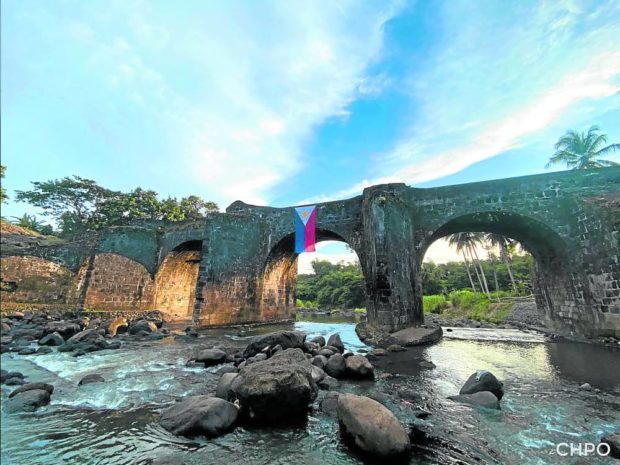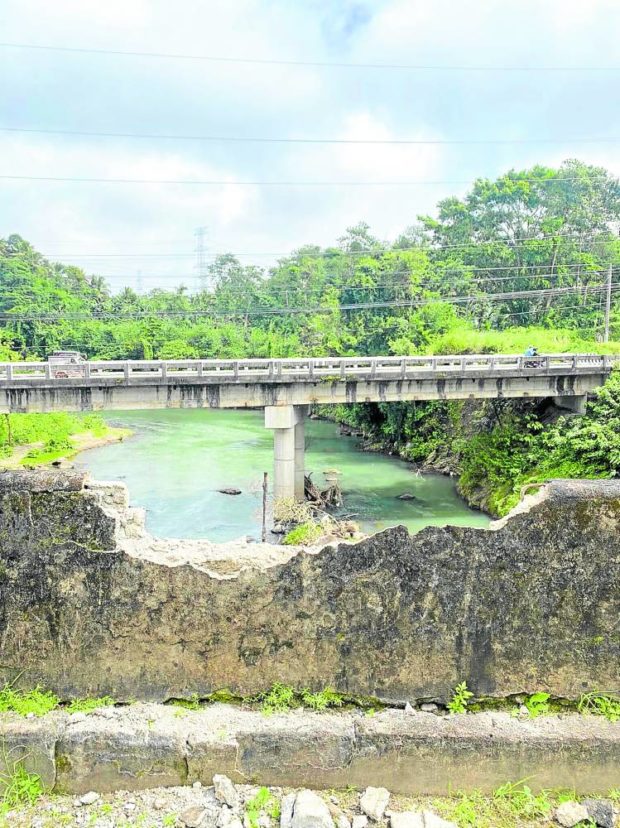Spanish-era bridge in Quezon damaged by vandals

CULTURAL TREASURE | This photo of the centuries-old Malagonlong Bridge is being used by the city government of Tayabas to promote the structure, which has been declared by the National Historical Commission of the Philippines as a national cultural treasure, as a tourist attraction. A section of the bridge’s railing was smashed by vandals using a sledgehammer. (Photo courtesy of the Tayabas City Government)
LUCENA CITY, Quezon, Philippines — One of Quezon province’s historical treasures in Tayabas City was damaged by still unidentified vandals on Sunday night, authorities said on Monday.
The damage to the Spanish-era Malagonlong Bridge, also known as Puente de Malagonlong, was discovered on Monday when local guides were touring visitors from Manila, according to Kevin Pabulayan, a city hall employee and one of the pioneer members of Tayabas City’s heritage group “Oplan Sagip Tulay.”
Pabulayan said a section of the bridge’s concrete railing was destroyed by a heavy object, probably a sledgehammer.
He said the local government had ordered the police to investigate the incident and identify the culprits.

This section of the centuries-old Puente de Malagonlong, a national cultural treasure and a tourist attraction in Tayabas City in Quezon, was found on Monday, Jan. 30, 2023, damaged by vandals, probably with the use of a sledgehammer. (Photo courtesy of the Tayabas City Government)
‘Grandest’
“Those who damaged the bridge must be held accountable. It’s not an ordinary bridge, it’s a national cultural treasure,” Pabulayan told the Inquirer in an interview.
The Cultural Heritage Preservation Office asked the residents to help gather information to identify the perpetrators.
Malagonlong is considered the grandest of the 10 Spanish arch bridges in Tayabas.
It was no longer used by travelers after a new concrete bridge was built adjacent to it.
In 2017, suspected treasure hunters started exploring the old bridge. Authorities found signs of initial digging activity on the floor of the bridge.
Vandals also defaced portions of the bridge with carved graffiti writings in 2019.
The 136-meter-long (445 feet) stone arch bridge, which spans the Dumacaa River between Barangay Mateuna and Barangay Lakawan, was built from 1841 to 1850.
Historical records said Filipinos built the bridge instead of paying taxes to the colonial government. The bridge was closed in 2004 for the construction of a concrete one.
It was constructed out of adobe blocks, limestone, molasses, and eggs for binders, the way it was done during the Spanish period.
The bridge was declared a “marked historical structure” by the National Historical Commission of the Philippines in August 2011.